Last Updated on November 25, 2023 by Sarah Wilson
Córdoba is a lovely, walkable city with a rich history and culture, and it is a must-visit for anyone visiting the Andalucia region in Spain.
And did you know that with four UNESCO world cultural heritage sites, Córdoba has more listed heritage sites than any other city in the world? Yes, even more than Paris and Rome.
So What Are The Four UNESCO World Heritage Sites In Cordoba?
The Mesquite Mosque-Cathedral – but I imagine you had guessed this one.
Cordoba’s Historic Quarter.
The Festival of the Patios (Courtyards)
Medina Azahara – the Medina is outside Cordoba, about 20 minutes away by bus. With only one day in Cordoba, it would take up a large chunk of your day to explore there.
So with so much to see, you may need more than just one day in Córdoba.
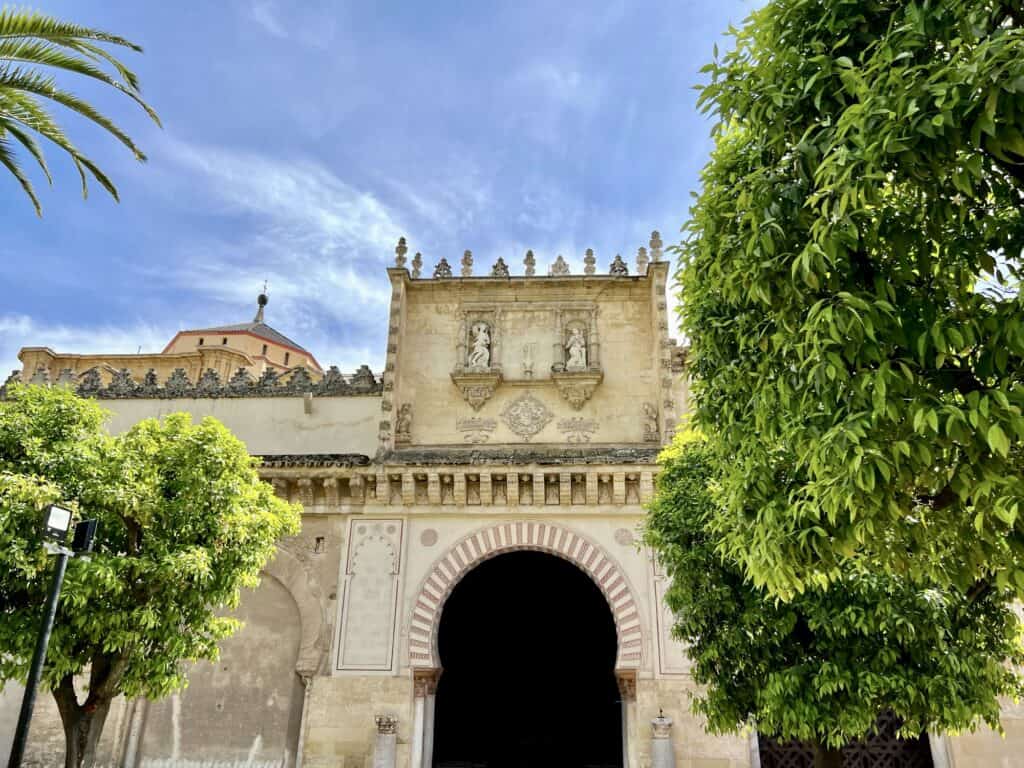
Entering The Mesquita
But First, A Little History
The story of Córdoba begins in the 2nd century BC during the Roman Empire when it was founded as a military colony.
During this time, Cordoba became an important centre of agriculture and trade, with olive oil production and textiles being the major industries.
In the 8th century AD, Cordoba was conquered by the Moors, who made it the capital of their Emirate of Al-Andalus. During this time, Cordoba became one of the world’s largest and most advanced cities, with an estimated population of 500,000 to one million people and a reputation as a centre of learning and culture.
Under Moorish rule, Cordoba also became an important centre for Islamic art and architecture, with notable examples including the Great Mosque of Cordoba, built during the 8th century.
In 1236, Cordoba was captured by the Christian Kingdom of Castile, and over time the city became a hub of Renaissance art and culture. Many of the city’s historic buildings were renovated or rebuilt during this time, and Cordoba now became known for its churches, gardens, and palaces.
Today, Cordoba is a popular tourist destination known for its historic architecture, cultural heritage, great food, and a must-visit on any trip to Andalucia.
If you only have one day to explore Córdoba, here are some of the best things you can do:
Start With A Walking Tour
When you only have a short time in a city, a walking tour is a great way to get your bearings and learn a little about the city you are visiting. Plus, it’s also an excellent way to pick up some local tips on essential topics like places to eat etc.
I took this walking tour with ArtenCordoba. The tour was enjoyable, but our guide lacked a little personality, or maybe he was new and a little shy. Personally, I prefer the free walking tours offered by Guru Walks. There are usually fewer people and the guides are normally excellent, but sadly, none were available at the time of booking.
If you prefer to pay a guide, this city tour comes highly rated.
Visit The Mezquita-Cathedral
The Great Mosque of Córdoba, also known as the Mezquita, is undoubtedly Córdoba’s most famous landmark. It was initially built in the 8th century as a mosque and later converted into a Catholic cathedral.
As it is a popular tourist attraction, it does get incredibly busy, so aim to get there early in the day.
During the 16th century, after the Christian conquest of Córdoba, the mosque was converted into a Catholic cathedral, adding altars, chapels, and other Christian decorations. However, much of the original Islamic elements of the mosque were preserved, resulting in this fantastic blend of Islamic and Christian architecture and decoration.
During my visit to Córdoba during Semana Santa, or Holy Week, I observed a religious procession to the Mezquita. I am not a religious person at all, but I do find religion fascinating from an anthropologist’s point of view.
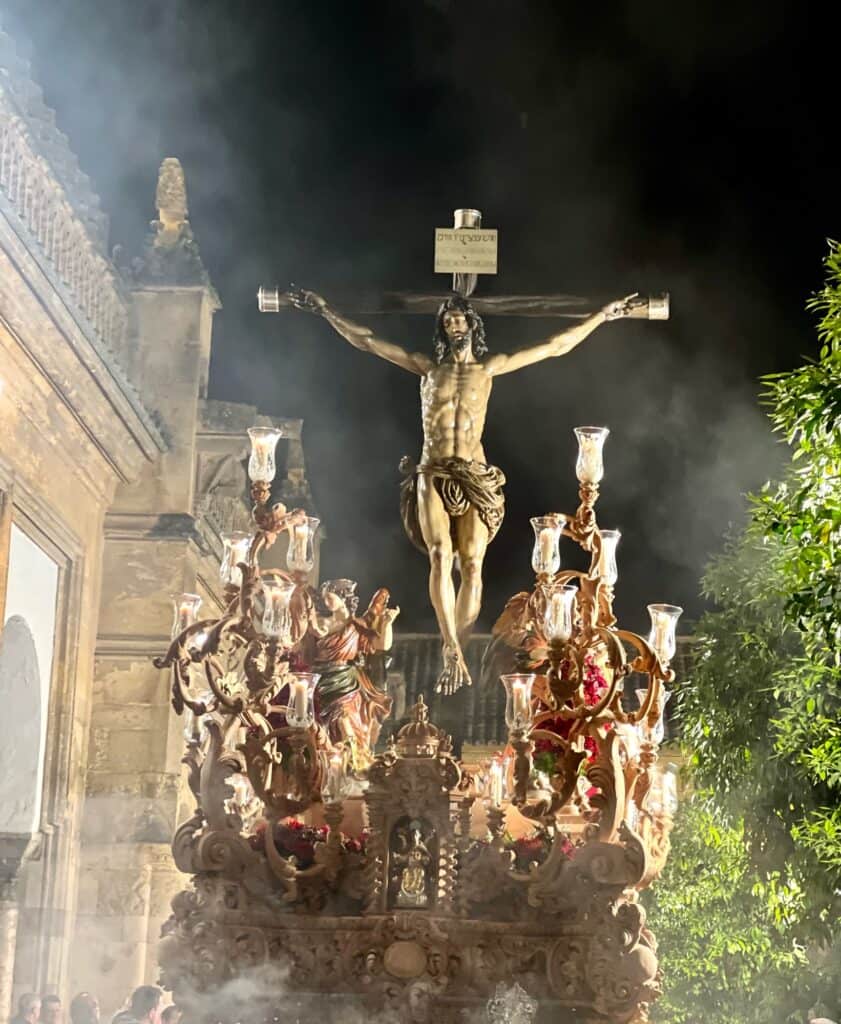
Note that you do need to buy a ticket to enter the Mezquita. Buying on-site is possible, but the queues can be quite long. I’d recommend buying your ticket in advance. You can buy online here direct with the Mezquita. If there is no availability here, you can also book one of these tours, but they cost a little bit more than booking directly.
And it’s now also possible to climb the Bell Tower for great city views. Standing at 54 metres, it is the tallest building in Córdoba.
Stroll Through The Jewish Quarter
The Jewish Quarter of Cordoba is filled with narrow winding streets, whitewashed houses, beautiful patios and plenty of shops selling fridge magnets, ceramics, and handmade crafts.
It dates back to the 10th century when Córdoba was a centre of learning and culture in the Islamic world. At that time, the Jewish community in Córdoba was one of Spain’s largest and most prosperous, and the neighbourhood was home to synagogues, schools, and workshops.
Don’t miss the Synagogue; it’s one of Spain’s few remaining medieval synagogues.
Explore the Alcázar de los Reyes Cristianos
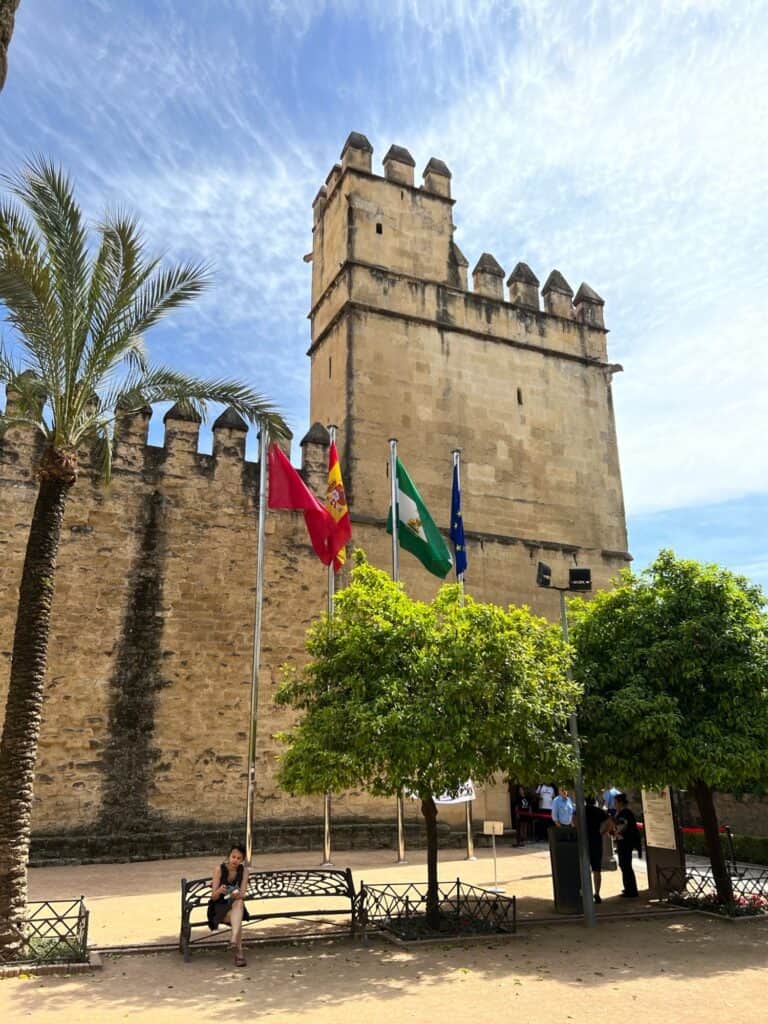
This fortress-palace was once the residence of Christian monarchs. It has beautiful gardens with fountains, pools, lush vegetation and a museum showcasing Roman mosaics and archaeological finds.
The Alcázar de los Reyes Cristianos was built in the 14th century by King Alfonso XI on the site of a former Moorish palace and was later used as a residence by Isabella I of Castile and Ferdinand II of Aragon.
Having just visited Christopher Columbus’s home in Genoa, it was interesting to learn that Christopher Columbus had a meeting here at the Alcázar de los Reyes Cristianos with Isabella I to present his plan for a westward voyage to the New World.
Tickets can be purchased in advance here.
Walk Across The Roman Bridge
The Roman Bridge spans the River Guadalquivir and connects the historic centre of Córdoba with the modern part of town. On the other side of the river, you’ll find the Calahorra Tower, a fortress that is now a museum about Andalusian culture.
In the evenings, the bridge is illuminated.
Calleja de las Flores (Alley of the Flowers)
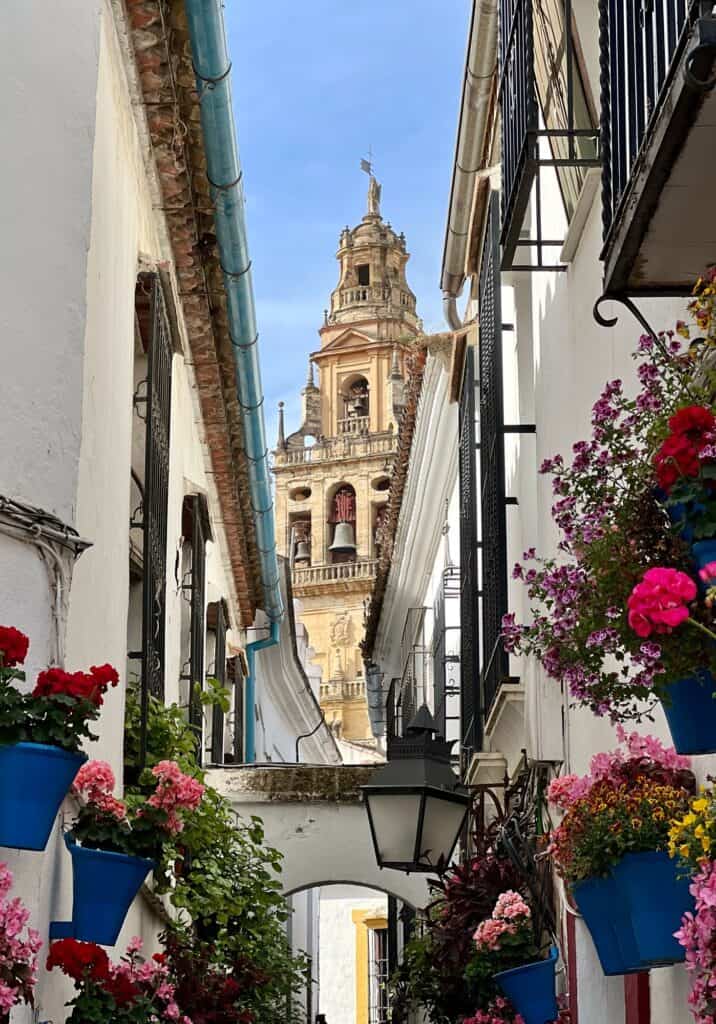
Flower Alley With The Bell Tower Of The Mesquita In The Background
The Flower Alley, or Calleja de las Flores in Spanish, is a picturesque alleyway located in Córdoba historic centre. It is one of the city’s most iconic and photographed spots, so you probably won’t be the only one there. So go early or later to find a less crowded time.
The Flower Alley is lined with whitewashed houses with wrought iron balconies decorated with beautiful flowers. At the end of the alley, there’s a small courtyard with a fountain and a view of the bell tower, and it is just a short walk from the Mezquita.
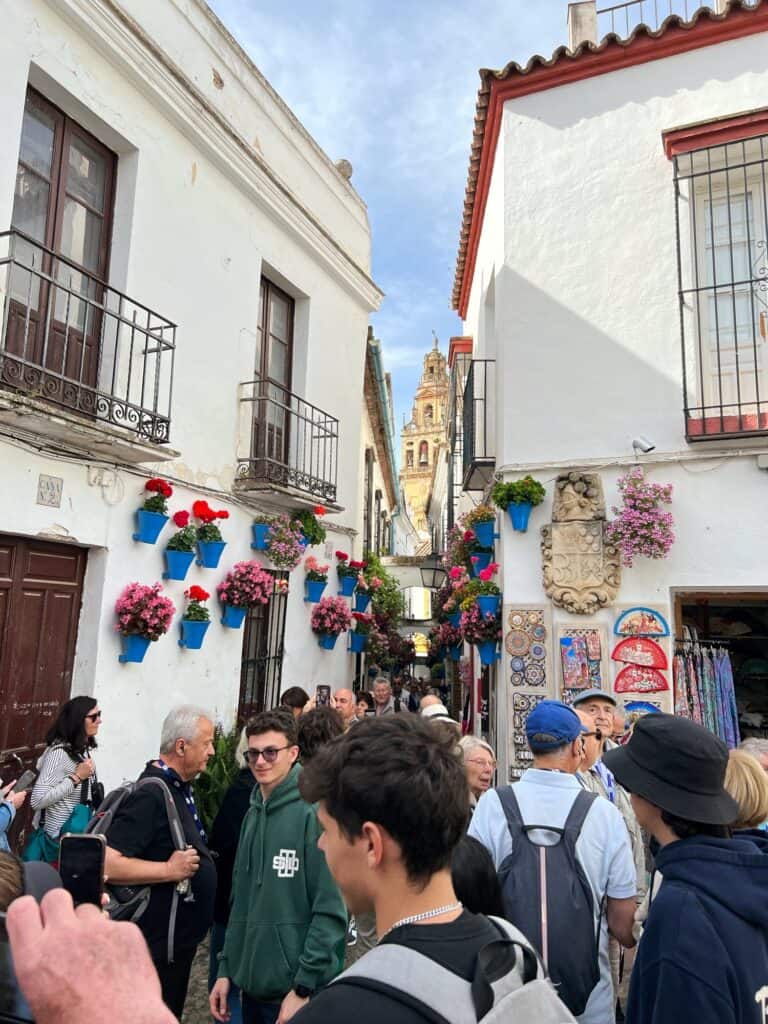
It’s A Popular Spot!!!!
Patios of Córdoba
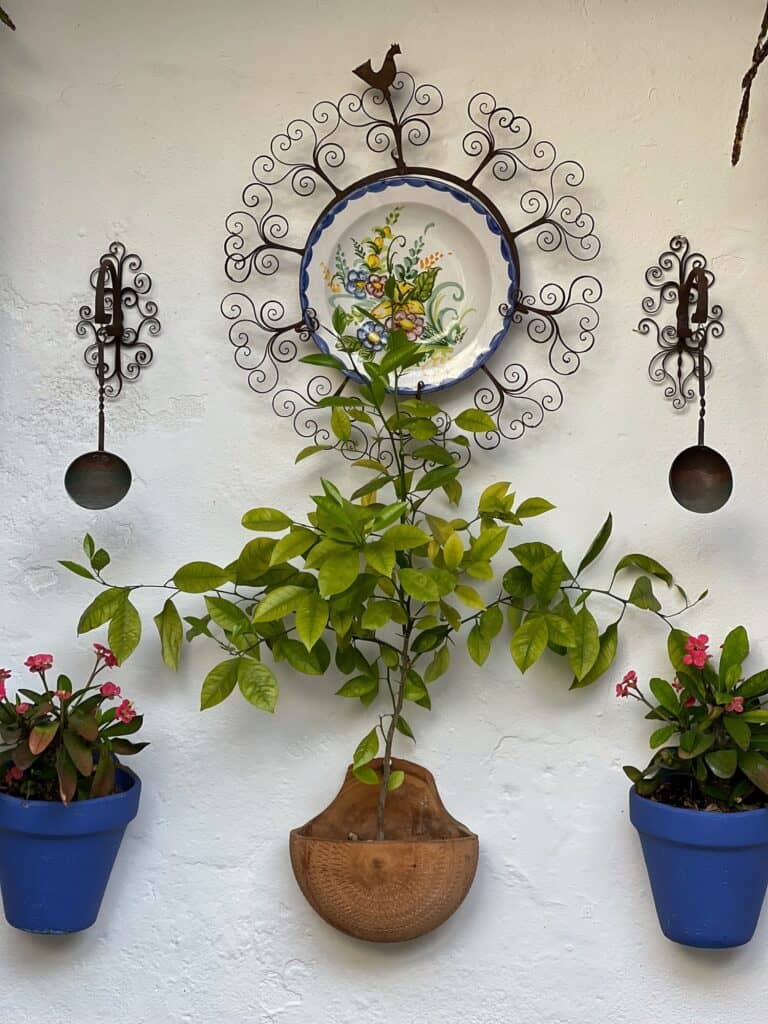
The Patios of Córdoba is a series of private courtyards filled with stunning displays of flowers, plants, and other decorations in Córdoba’s historic centre and serve as an oasis from the hot Andalusian sun.
Every year for two weeks in May, the Festival de los Patios takes place. During this festival, residents of the historic district open their private patios to the public and compete for prizes for the most beautiful and well-decorated courtyard.
But outside those two weeks, you can still visit some of the patios or join a guided tour to discover some of the best patios.
Plaza de las Tendillas
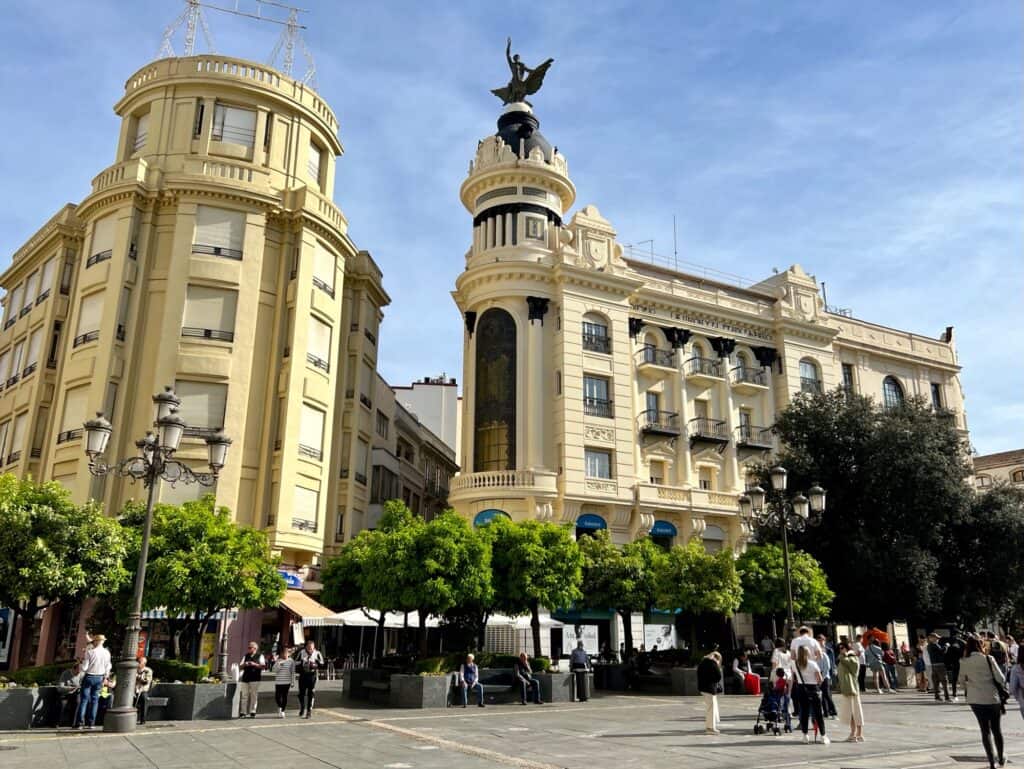
Plaza de las Tendillas – That Building Doesn’t Tilt In Real Life 😱 Just In My Photos!
Plaza de las Tendillas is a large, bustling square in the heart of Córdoba, named after the tendillas, or shops, that used to line the square.
The plaza is surrounded by beautiful historic buildings, including the City Hall and the Gran Plaza Hotel de Córdoba and is lined with shops and restaurants.
If you like music and are in Córdoba in July, the square is transformed into an open-air concert venue for the Córdoba International Guitar Festival with performances by some of the world’s most talented guitarists.
Check here for details of this event.
Roam Past The Roman Temple
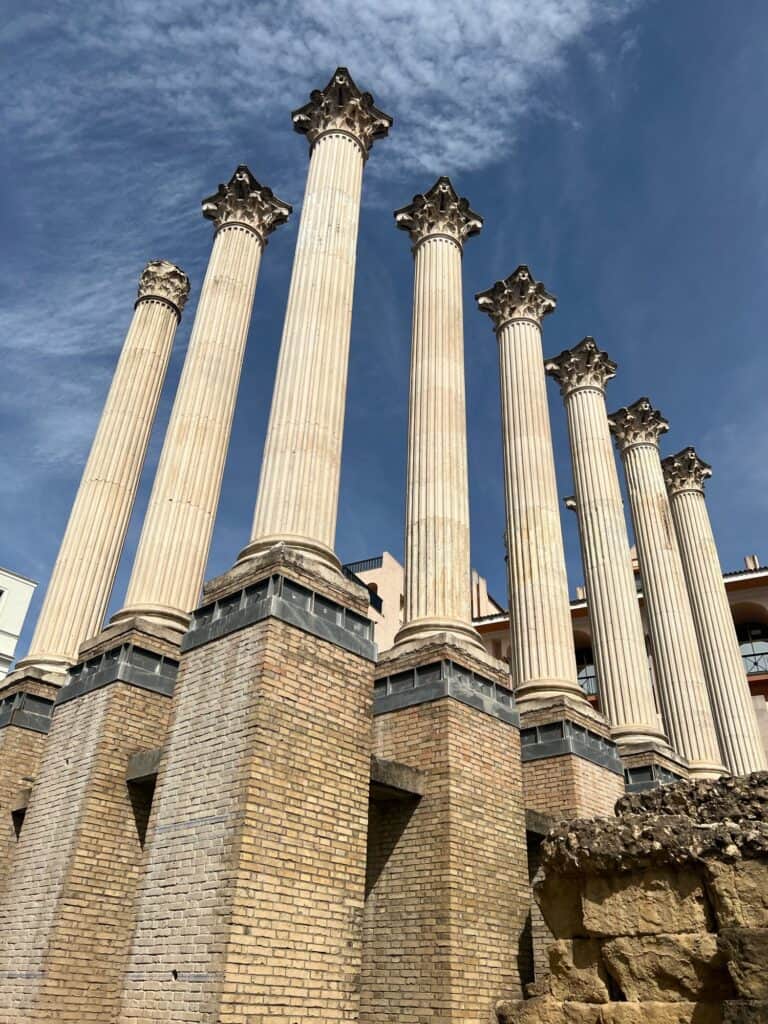
The Remains of the Roman Temple in Córdoba
The ruins of this Roman temple were discovered in the 1950s during the expansion of City Hall.
The temple was built during the reign of Emperor Claudius and was originally part of a larger Roman forum. The temple was likely used for religious ceremonies and was later used as a Christian church during the medieval period.
Viana Palace
The 14th-century Viana Palace (Palacio de Viana in Spanish), also known as the Museum of the Courtyards, is located in Córdoba’s historic centre.
The twelve courtyards are the main attraction of the palace. Each courtyard has its distinct character, with different colourful flowers, plants, fountains, and decorations.
Check here for opening times for the Viana Palace. For tickets to the Viana Palace, see here.
Try The Local Salmorejo Soup
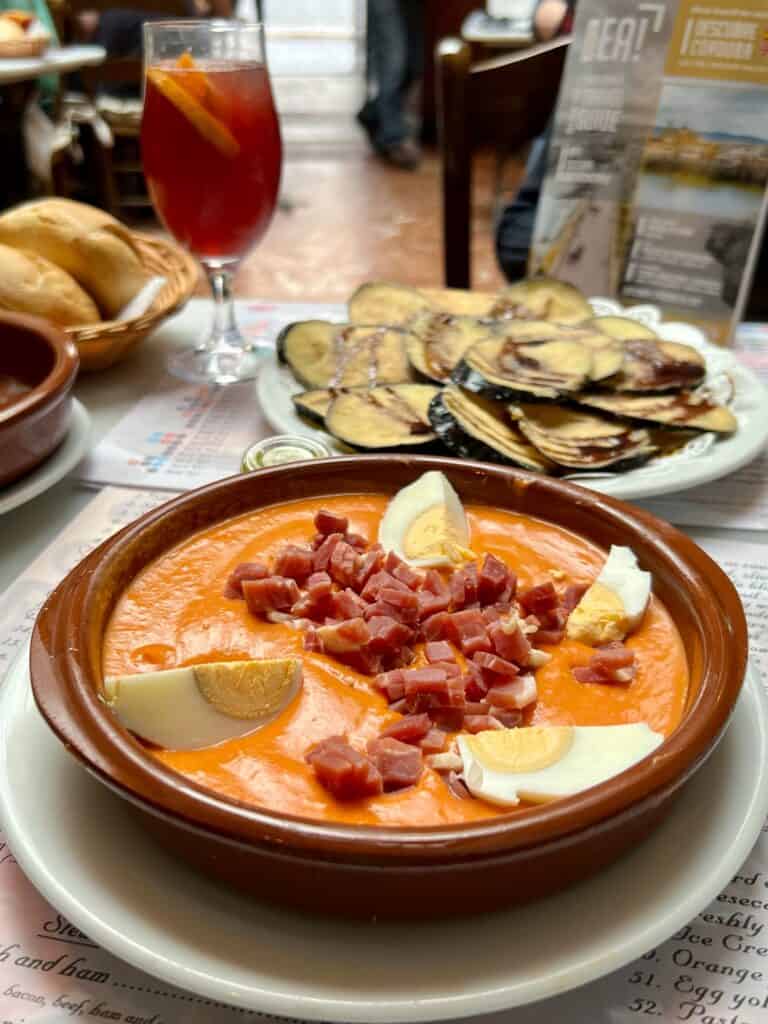
Salmorejo Soup and Fried Aubergines in Honey
Salmorejo is a cold soup that is a popular dish in the city of Córdoba.
The main ingredients of salmorejo are ripe tomatoes, bread, garlic, olive oil, and salt. The soup is similar to gazpacho but is much thicker and creamier due to the bread and comes garnished with diced Serrano ham and chopped hard-boiled eggs.
It is usually served as a starter or appetizer. It is simple and delicious, but I must admit I prefer my soups served hot and couldn’t help thinking if they would just heat up this soup, it would be amazing.
Recommended Lunch Spot In Córdoba
Tabernas Salinas is a lovely little restaurant that’s been around since 1879. You can dine in the beautiful internal courtyard decorated in Andalucia style. It’s a great spot for trying the local cuisine, such as the salmorejo soup. I really enjoyed the fried aubergines in honey served here.
Is One Day In Córdoba Enough?
Córdoba is a relatively small city, so yes, one day is enough to visit the city’s main attractions. But be sure to arrive early to maximize your time.

Looking Across The Roman Bridge To The Mezquita
When is the Best Time to Visit Córdoba?
The best time to visit Córdoba is during the spring or autumn months. I visited at the end of March, and the smell of jasmine and orange blossom in the air was divine.
But if you visit during the first two weeks of May, you can enjoy the Los Patios de Córdoba (The Patios of Córdoba) festival.
Avoid visiting during the summer months, as temperatures can be around 37 °C (99 °F) in July and August. However, there are periods of extreme heat. On some days, the temperature can reach 42/43 °C (107/109 °F). The highest temperature recorded was 47 °C (116.5 °F)!
But from late September to the beginning of November, there will be fewer visitors, and you can expect mild and dry days.
How To Get To Córdoba
Getting To Córdoba By Plane
The nearest airports to Córdoba, Spain, are Seville, Malaga, Granada and Madrid.
Seville Airport (SVQ)is located approximately 140 km northwest of Cordoba and is the closest airport to the city. Well, there is a little airport in Córdoba, but for now, there are no regular scheduled flights.
Granada Airport (GRX) is around 190 km southeast and would make for a great two-centre city break with Córdoba. If you want to fly to Granada airport, there are direct flights from London Gatwick or take an international flight to Barcelona or Madrid and then an onward domestic flight to Granada.
Malaga Airport (AGP) is located approximately 160 km southeast of Cordoba. It is a large international airport with many flights from European destinations.
Madrid-Barajas Airport (MAD) is located approximately 390 km north of Cordoba and is Spain’s largest airport. It is a popular hub for connecting flights to worldwide destinations and is less than two hours away from Córdoba by high-speed train.
From each of these airports, there are several transportation options available to Cordoba.
Getting To Córdoba By Train
Book in advance for the best train fares to Córdoba on Spain’s AVE high-speed trains.
Córdoba train station is located two kilometres northwest of the city centre.
There are frequent trains to Córdoba from Seville (45 minutes), Malaga (one hour) and Madrid (1 hour and 45 minutes.
The cheapest way to book train tickets in Spain is through Renfe, Spain’s national rail operator. Although I usually book my train tickets through OMIO as it’s just less hassle even though there is a small booking fee for using them.
Getting To Córdoba By Bus
Long-distance buses to/ from Córdoba arrive at the bus station, just opposite the train station.
The Alsa bus company operates services to Granada (2 hours 40 minutes), Málaga ( 2 hours and 30 minutes), and Seville (1 hour 45 minutes).
Socibus has a service from Madrid (4 hours 50 minutes).
Bus tickets can be bought online or at the bus station. It may take a little longer between cities, but it can work out to be considerably cheaper than the train.
Where To Stay In Córdoba
Although you can easily visit Córdoba as a day trip from Seville, Málaga or even Madrid, I highly recommend booking a hotel for at least one night. That way, you can make the most of your day in Córdoba and enjoy its more relaxed vibe in the evening when all the day-trippers have departed.
There is accommodation in Córdoba to suit all budgets; check here for inspiration, prices and availability.
Is Córdoba Worth Visiting?
Most definitely. From its incredible Mezquita to its beautiful flower-filled patios, Córdoba is a delight to explore and a must-see on any Andalusia itinerary.
For More Posts On Spain, Check These Out
What To See In Granada Besides The Alhambra
From Barcelona To Rome With Viking Cruises
30 Days In The Camino De Santiago In 30 Seconds
Save This Post For Later

Disclaimer: Some of the links on this website are “affiliate links”, meaning that if you click on the link and make a purchase, I will receive a small commission at no extra cost. This helps me to keep my website running and continue to share my travelling knowledge with you. Thank you for using the links on my website.




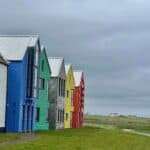

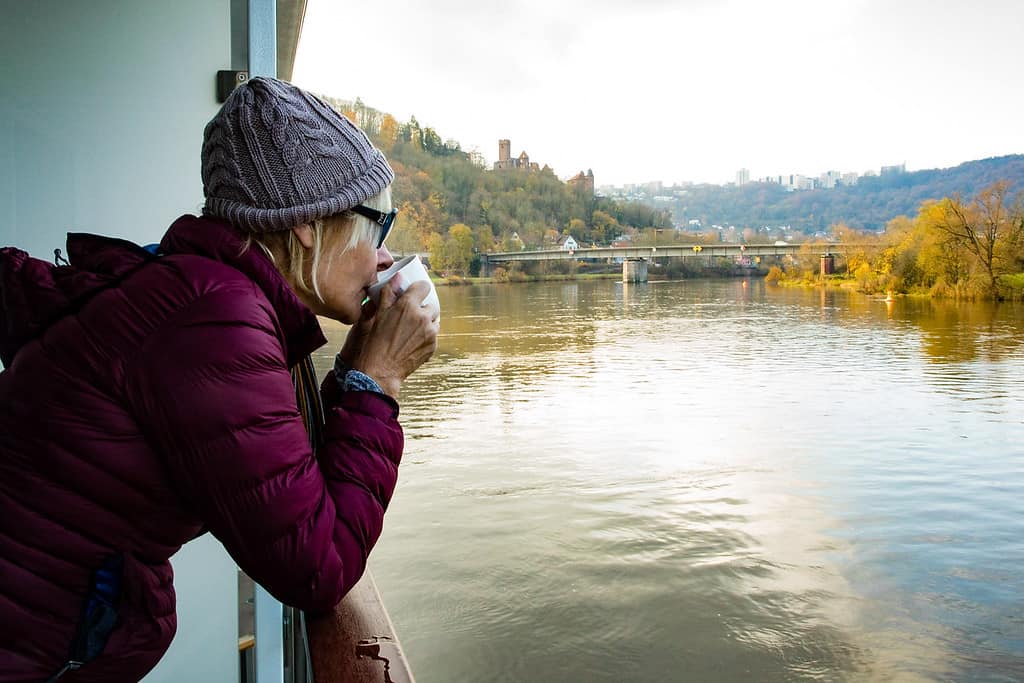
We spent a few days in Cordoba and were exhausted after we ran around visiting things. So it was interesting to see what things you prioritized on your one day visit. The building art and decorations sure had us strolling slowly. We missed the Roma Temple and the Viana Palace on our stay. But we did fit in a hammam visit to take a break one afternoon.
Wonderful post, I love learning about the history of a location. Had no idea Córdoba had so many UNESCO sites.